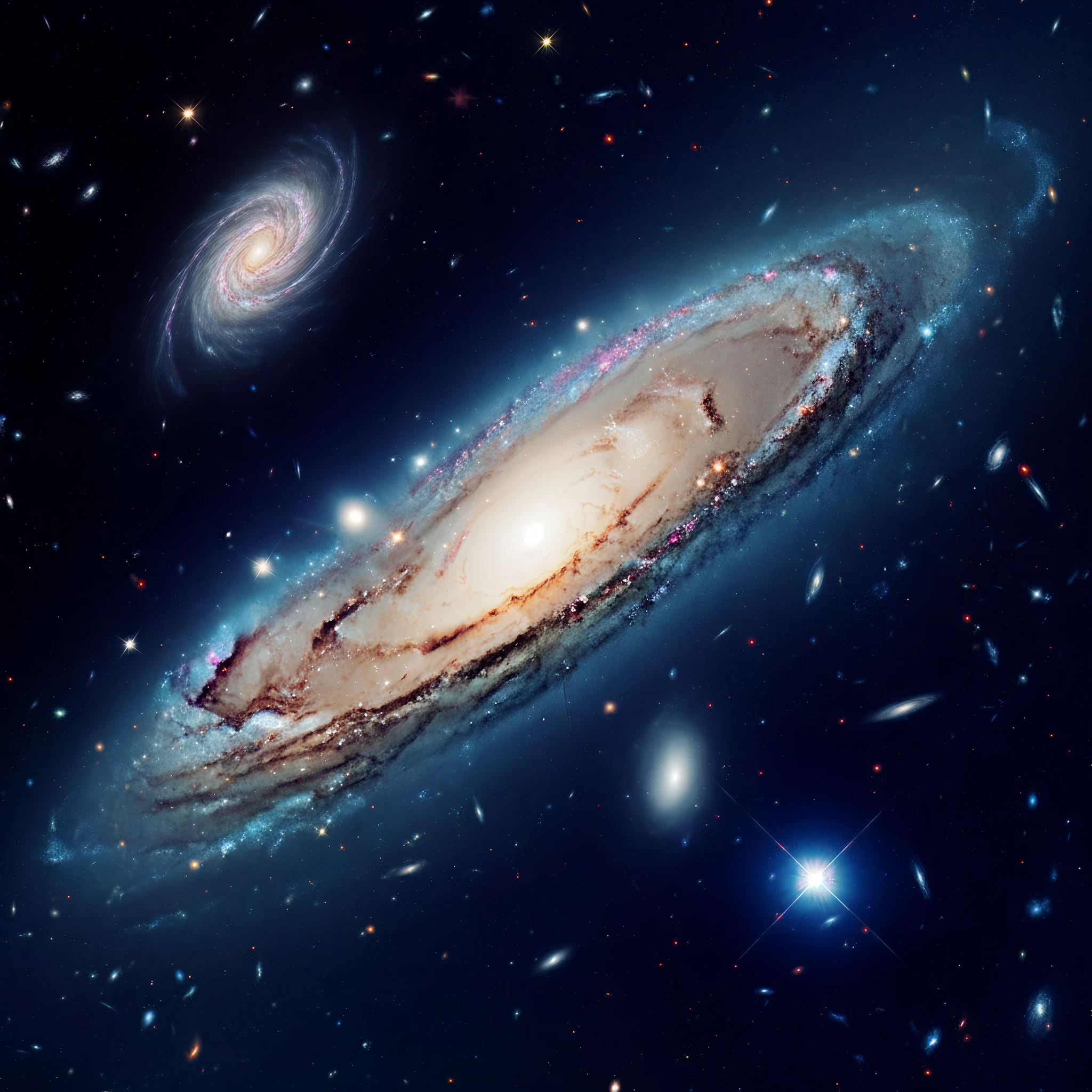Introduction
Astronomers have long known that our Milky Way galaxy and its spiraling neighbor, Andromeda (M31), are destined to collide. While the event is expected billions of years in the future, this cosmic collision sparks both curiosity and awe among scientists and astronomy enthusiasts alike. The monumental event will redefine the structure of our local universe while raising questions about the fate of our own solar system.
Here, we’ll explore the fascinating details behind this galactic interaction, the science backing these predictions, its potential outcomes, and whether Earth will stand a chance amidst this interstellar shake-up.
The Galaxies in Question
The Milky Way and Andromeda galaxies are two of the largest members of the Local Group, a cluster of more than 50 galaxies held together by gravity. Andromeda, at approximately 2.5 million light-years away, is similar to the Milky Way in structure, with its spiral arms and a supermassive black hole at its center. Both galaxies are rich in stars, planetary systems, gas clouds, and, critically, dark matter. Gradually, these two colossal entities are being pulled toward each other due to their mutual gravitational attraction.
When Will It Happen?
The timeline for the collision is vast on a human scale but relatively short in cosmic terms. Earlier models suggested that the Milky Way and Andromeda would collide in about 4 to 5 billion years. However, recent data, combined with advanced computer simulations conducted by the European Space Agency’s Gaia space telescope and the Hubble Space Telescope, present new possibilities.
These studies suggest the collision may happen within the next 5 billion years, though there’s a chance it could be delayed by as much as 10 billion years or possibly avoided altogether depending on complex gravitational interactions.
Simulating the Collision
Scientists rely on sophisticated simulations to predict the various scenarios of this galactic encounter. Using Monte Carlo simulations with over 100,000 trials, researchers have modeled different outcomes based on variables such as the movement, mass, and gravitational pull of both galaxies.
Interestingly, the simulations highlight a 50/50 chance of the galaxies colliding within the next 10 billion years. Factors like the gravitational influence of smaller companion galaxies, including the Large Magellanic Cloud and M33 (Triangulum Galaxy), add complexity to these predictions.
The Aftermath The Birth of Milkomeda
When the collision does occur, the Milky Way and Andromeda will merge into an entirely new galaxy, often referred to as “Milkomeda.” This elliptical galaxy will retain some remnants of both original galaxies but will lose their distinct spiral structures. Its size and mass will outscale any galaxy currently in the Local Group, ushering in a new era for this corner of the universe.
During the collision, stars from both galaxies will be thrown into new orbits, and their interstellar gas will collide, fueling intense bursts of star formation. Over millions of years, the light of newly formed stars and the merging gas clouds will create spectacular cosmic visuals.
Will Earth Be Affected?
One of the most common concerns surrounding this colossal event is how it will impact Earth and our solar system. The good news is that the risk to Earth is minimal. Galaxies are mostly empty space, so direct collisions between stars are exceedingly rare. Our Sun and its planetary system are expected to survive the encounter, although they might be flung into a different region of Milkomeda as a result of the gravitational disruptions.
From Earth’s perspective (if life still exists), the night sky will undergo an incredible transformation. Observers will witness Andromeda growing larger and brighter as it approaches, followed by dazzling displays of star formation and cosmic fireworks during the merger.
What Makes This Event Significant?
The Milky Way-Andromeda collision offers a unique opportunity to study large-scale galactic interactions and the evolution of cosmic structures. By analyzing these events, scientists gain insights into the forces that shape galaxies and the universe itself. Additionally, similar mergers are thought to have occurred throughout the cosmos, making this event a snapshot of a universal process.
Final Thoughts
The collision between the Milky Way and Andromeda is an awe-inspiring event that reminds us of the dynamic and ever-changing nature of the universe. While humanity won’t be around to witness this cosmic collision firsthand, its study continues to captivate astronomers and inspire us to reflect on our place in the vast universe.
For the curious minds eager to learn more or visualize these scenarios, animations and model simulations of Milkomeda provide a glimpse into this spectacular future. Strap in, because even across billions of years, the universe offers no shortage of cosmic drama.








